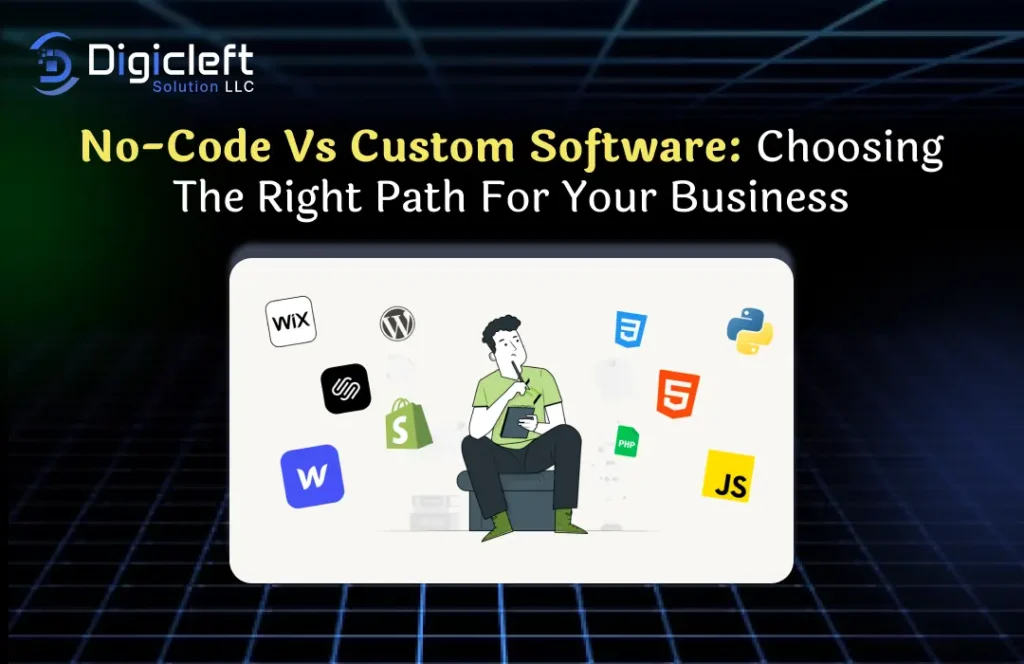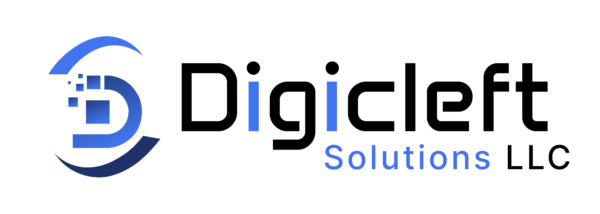
Technology isn’t just a luxury it’s the lifeblood of every modern business. Whether you’re launching a startup, scaling a small business, or streamlining internal operations, the software you choose can make or break your growth.
But here comes the million-dollar question:
Should you go with a no code solution or invest in custom software?
It’s not just a tech decision it’s a business strategy.
Let’s break it down with a touch of real talk. so you can make the right call and maybe save yourself from a few costly mistakes.
What Is No-Code Development?
Simple Description
No-code platforms are like LEGO for software. You can build apps, websites, CRMs, and more by simply dragging and dropping components no coding skills required. It’s fast, it’s visual, and yes , it feels a little magical.
Key Features of No-Code Platforms
- Drag-and-drop builders
- Pre-built templates
- Database and form management
- Workflow automation
- Third-party integrations
Popular No-Code Tools
- Webflow for websites
- Bubble for web apps
- Airtable parts-preadsheet, part database
- Zapier to connect different tools
What Is Custom Software Development?
Simple Description
Custom software is tailor-made. You hire a developer or a development team to build something from scratch code, design, logic all of it. Think of it like a custom suit versus one off the rack.
Key Features of Custom Software
- Full control over features and UX
- Performance optimized to your needs
- Custom integrations with your internal systems
- Completely owned and personalized
Examples of Custom Software in Action
- Banking apps with strict security needs
- Company-specific inventory or ERP systems
- High-traffic E-Commerce platforms
No-Code vs. Custom: The Comparison
| Feature | No-Code | Custom Software |
|---|---|---|
| Speed | Launch in days or weeks | Takes weeks to months |
| Flexibility | Limited best for simple apps | Unlimited built exactly as needed |
| Cost | Low upfront, budget-friendly | Higher cost, better long-term ROI |
| Maintenance | Handled by the platform | Your developer team handles it |
| Security | Shared infrastructure , higher risk | Tailored security per business needs |
| Ownership | You’re renting the platform | You fully own the product |
When to Choose No-Code
- Startups on a Budget: Build and test without burning cash.
- MVPs and Prototypes: Use tools like Bubble or Glide to impress investors or early users fast.
- Internal Tools: Great for CRMs, workflow trackers, or dashboards.
- Non-Technical Entrepreneurs: Turn your idea into a real app no coding required.
When to Choose Custom Software
- Unique Business Processes: Custom is the only way to go if your model doesn’t fit the mold.
- High-Performance Requirements: Real-time, large-scale processing demands custom Development.
- Scalability & Integration: Custom platforms are built to evolve with your business.
- Security-Heavy Industries: Finance, healthcare, and compliance-driven sectors need custom solutions.
Case Studies
Startup Using No-Code to Launch Fast
A startup built a job board MVP using Webflow and Airtable. It went live in one week, attracting early users and investors all without a single line of code.
Company Choosing Custom for Control
A logistics firm needed real-time GPS tracking. No-code couldn’t handle the complexity but custom development delivered precision and control.
The Hybrid Approach
Why Not Both?
Many businesses start with no-code, then transition to custom or run both side by side.
Real Hybrid Examples
- Use Webflow for the front-end website
- Custom backend for secure data processing
- Automate tasks with Zapier , while maintaining custom logic elsewhere.
Future of Software Development
AI-Powered No-Code Tools
AI is making no-code platforms smarter think of it as having a mini developer inside your browser.
The Role of Developers Is Evolving
No-code frees developers to solve harder, high-impact challenges while business teams build faster.
How Digicleft Solution Helps
Strategic Consultation
Digicleft doesn’t believe in one-size-fits-all. They assess your business goals and budget to help you choose what fits best no-code, custom, or hybrid.
End-to-End Development
With in-house teams skilled in both no-code and custom dev, Digicleft ensures your business gets the most efficient and scalable tech solution possible.
Conclusion
No-code vs. custom software it’s not about which one is better. It’s about what’s right for your business.
- No-code: Fast, cost-effective, and empowering
- Custom: Powerful, scalable, and fully yours
And the best part? You don’t have to figure it out alone. Digicleftsolutionllc is here to guide your decision with clarity and care.
Choose wisely. Build bravely. Never stop growing.
FAQs
1. What’s the main difference between no-code and custom software?
No-code uses visual builders and pre-built tools. Custom software is coded from scratch to meet your unique business needs.
2. Is no-code only for small businesses?
Not at all! Even large enterprises use no-code for internal tools, prototyping, and automation.
3. Can I scale a no-code app later?
Yes , but there are limitations. Many businesses start with no-code and transition to custom development as they grow.
4. How long does custom software take to build?
Depending on complexity, it can take a few weeks to several months but it will be built exactly to your needs.


